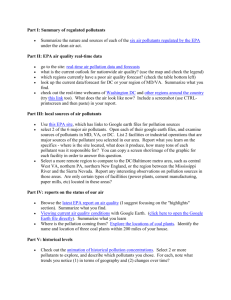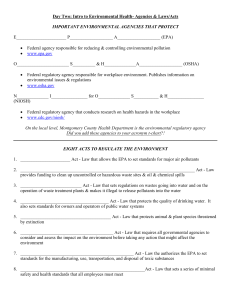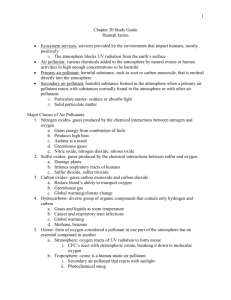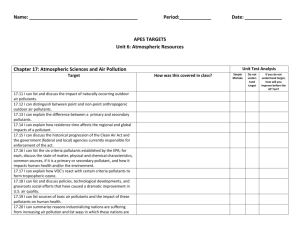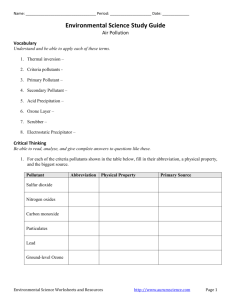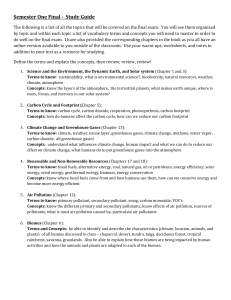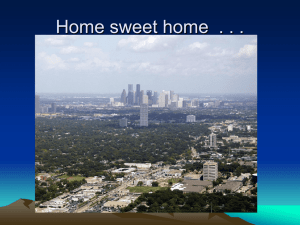Air introduction
advertisement
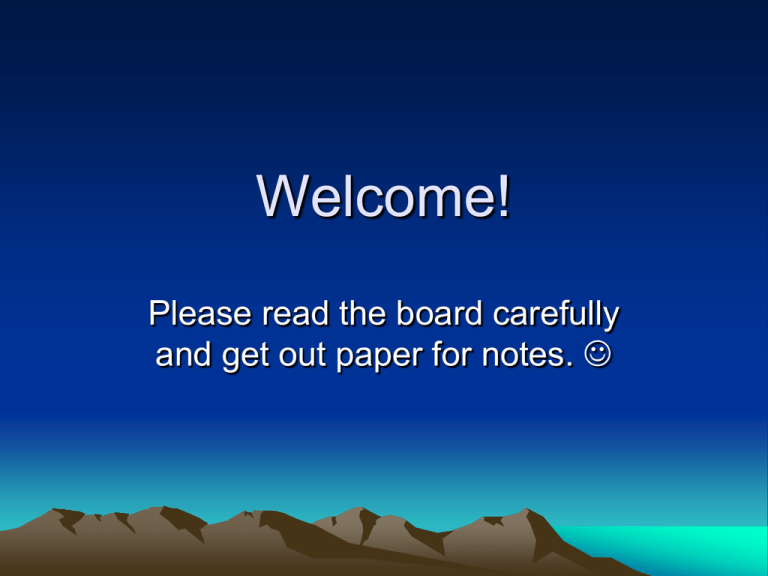
Welcome! Please read the board carefully and get out paper for notes. Home sweet home . . . Or is it???? Breathing! Some basics What is in our atmosphere? Normal chemical composition of our atmosphere: (N2) 78% (O2) 21% Trace gases (water, argon, carbon dioxide, other pollutants) 1% Pollution terminology • Pollutant • Source • Effect Article: EPA Proposes New Ozone Standard • EPA = Environmental Protection Agency • As you read, label the pollutant, source(s) and effects Pollution units Parts per thousand (ppt) Parts per million (ppm) Parts per billion (ppb) The air pollution flip chart for visual learners • Draw and label the atmospheric layers in black or blue pen. Primary pollutants come directly from a source • Mobile sources Mobile sources Stationary Sources • Power plants Refineries Secondary pollutants form in atmosphere as gases react • Smog, ground level ozone and acid rain Add the sources to the three flip charts We're #? • . . . .for the number of days exceeding allowable ground level ozone levels. • American Lung Association State of the Air Measuring pollutants • • • • parts per thousand = ppt parts per million = ppm Parts per billion = ppb Parts per trillion = ppt (must know from context) Clean Air Act • Passed by Congress in 1970, updated in 1990, ‘93, 97, 2008. • Required EPA (Environmental Protection Agency) to identify criteria pollutants and to establish minimum standards: EPA came up with NAAQ’s National Ambient Air Quality Standards • Six criterion pollutants: NOx, SOx, O3, Pb, CO, particulates • Established minimum standards: 1hr and 8 hr • EPA is working to have greenhouse gases added by Congress to the NAAQs Houston’s special issues • 1/3 of all US petrochemicals pass through our refineries • Refineries separate crude oil into many different products from asphalt tar to gasoline to butane Refineries create carcinogenic air pollutants Benzene, toluene, ethylbenzene, xylenes So what is being done about this? - City monitoring 45 mobile monitoring stations State monitoring • Flexible permitting – each facility has total cap emissions limit, but flexibility in how they meet that limit. • TCEQ issues permits for emitting certain amount of pollutants • Facilities do “self reporting” Check your understanding! • What is the difference between a primary and a secondary air pollutant? • Give an example of a mobile source. • Give an example of a stationary source. • Which layer of the atmosphere are you in RIGHT NOW?!!!! • What is the normal chemical composition of our atmosphere?
